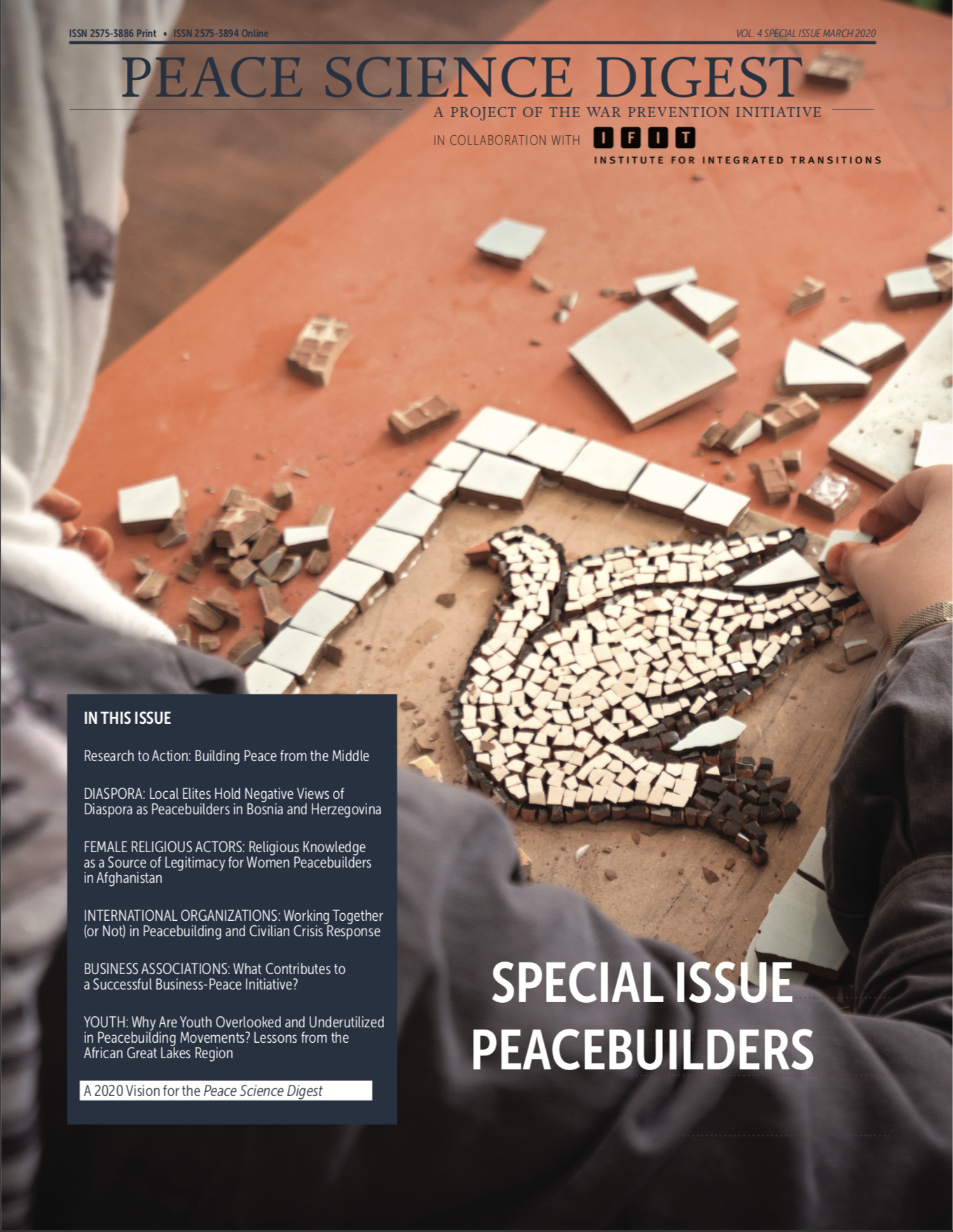This special issue—the final issue of Volume 4—focuses on peacebuilders: Who are they? How do they work? What are their unique needs and capacities? What challenges do they face? We’ve partnered with the Institute for Integrated Transitions (IFIT) to bring these analyses to the forefront of conversations on how to build sustainable peace by focusing on the type of actor who is doing the work.
Anyone and everyone dedicated to deescalating violence and preventing its recurrence can be a peacebuilder. This special issue takes a closer look at certain types of peacebuilders, including members of the diaspora, female religious actors, international organizations, business associations, and youth. While certainly not exhaustive, this list can help us begin to appreciate the great diversity of peacebuilders in different contexts around the world and how each category of peacebuilder has something unique to contribute to this complex work.
Though the context may change, these actors face similar challenges. For instance, since peacebuilders do not work in isolation, they must figure out how to cooperate and coordinate effectively with different types of peacebuilding actors working in the same physical space. Challenges in cooperation and coordination with other actors was a cross-cutting theme in several of the analyses featured below (Diaspora, International Organizations, and Business Associations). Additionally, although one of the goals of peacebuilding is to transform power dynamics that resulted in violent conflict, social identities may continue to exert influence on who gets access to resources and recognition for their work, posing another challenge for the peacebuilding process (Female Religious Actors and Youth).
- Building Peace from the Middle: The Critical Work of National Brain Trusts
- DIASPORA: Local Elites Hold Negative Views of Diaspora as Peacebuilders in Bosnia and Herzegovina
- FEMALE RELIGIOUS ACTORS: Religious Knowledge as a Source of Legitimacy for Women Peacebuilders in Afghanistan
- INTERNATIONAL ORGANIZATIONS: Working Together (or Not) in Peacebuilding and Civilian Crisis Response
- BUSINESS ASSOCIATIONS: What Contributes to a Successful Business-Peace Initiative?
- YOUTH: Why Are Youth Overlooked and Underutilized in Peacebuilding Movements? Lessons from the African Great Lakes Region

